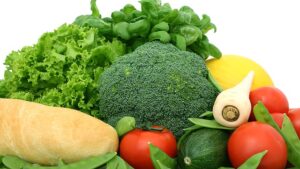University of Florida College of Agricultural and Life Sciences students are learning how to breed better peppers under the guidance of Professor Bala Rathinasabapathi.
And by “better,” we mean a more savory taste, among other characteristics. Florida produces $207 million worth of bell peppers annually, according to the Florida Department Agriculture and Consumer Services (FDACS). In fact, as of 2012, Florida ranked second nationally in the value of bell peppers. Improving traits may help the Florida pepper industry grow even larger.
Now, for a new study published in the Journal of the American Society for Horticultural Science, Rathinasabapathi and his team cross-bred two heirloom varieties of peppers – the Bulgarian Carrot and the Round of Hungary — to come up with more desirable consumer traits.
“There is great potential to breed better-tasting vegetables, richer in nutrients, antioxidants, colors, shapes and flavors than the ones available to the public,” said Rathinasabapathi, a horticultural sciences faculty member with the University of Florida Institute of Food and Agricultural Sciences. “The knowledge developed here will be useful to breed better pepper varieties liked by consumers.”
Many pepper-breeding programs in the United States focus on developing disease resistance and yield, he said. Rathinasabapathi and his team focused on qualities consumers can appreciate, such as taste and nutrition. Peppers are a good source of vitamin C, potassium, and dietary fiber, according to FDACS.
For the study, researchers used traditional genetic tools to study which traits are inherited and how. Their study verified many findings from previous research, but they also uncovered new data about certain characteristics, such as pumpkin-shaped fruit, fruit-wall thickness and pigments important for fruit color, Rathinasabapathi said.
“These new data will help us and others breed types of peppers with combinations of interesting shapes, colors and flavor,” he said.
This study is the latest published research in a program developed by Rathinasabapathi in 2010. He came up with the idea for a project called “Building Better Peppers,” with funding from CALS through a teaching mini-grant.
“The idea is to create a long-term discovery platform where any undergraduate student can do meaningful and creative research projects in plant breeding,” he said. “Since that year, semester after semester, many students have participated in this project to conduct semester-long research projects. Some of the students in this project have worked with visiting scientists from Brazil to complete the present study that is now published.
“I love to see young people get excited about plant breeding research, an important area for improving human nutrition and improve food security,” Rathinasabapathi said. “This project is a vehicle for that.”












